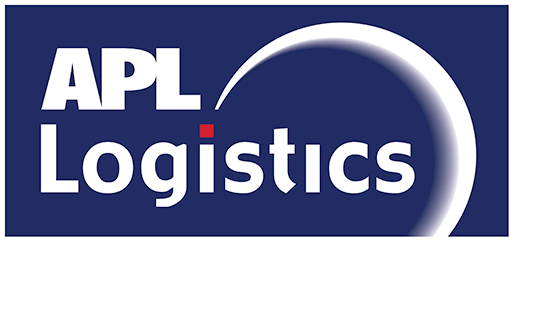March 19, 2025 in Articles
Charting Supply Chain Resilience in China’s Shifting Economic Landscape
Supply chains are steering through a perfect storm of global upheavals. Fresh off his November 2024 re-election, Donald Trump has doubled down on tariffs, reigniting trade tensions with China. On the other side of the Pacific, Beijing is attempting a delicate balancing act: curbing its oversized property sector, tackling deflationary pressures from e-commerce-fueled price wars, and unveiling an unprecedented stimulus package to steady the ship.
Han Lin, China Country Director at The Asia Group, was the guest speaker at the Shanghai edition of APL Logistics Supply Chain Symposium. Based in Shanghai, Han works in close coordination with TAG’s Washington, DC-based China Practice to lead the firm’s local presence and engagements in China. With nearly 20 years of in-country experience in China’s financial markets and corporate strategy, Han brings a wealth of knowledge to the table. In this article, based on insights shared by Han, we will explore China’s shifting economic landscape, outline the likely direction of U.S. trade policy, and consider key logistics takeaways for supply chain leaders navigating this fast-changing and deeply uncertain environment.
Tariff Threats and Trade Wars: The Impact of China-US Rivalry
In the US’s polarized political climate, one rare bipartisan consensus has emerged: a tilt toward protectionist trade policies. Trump’s second term locks in a hardline trade stance with tariffs on China goods already up 20% year-to-date with an effective tariff rate of 33% when factoring the 10% tariff from the first Trump administration. While Trump’s early, all-guns-blazing rhetoric taunted tariffs as high as 60%[1], the final figure suggests a more measured, strategic show of strength.
Han observed that the changes in trade policy go deeper. First, Trump has taken an unusual lead as trade negotiator-in-chief rather than delegating the role to the U.S. Trade Representative. Second, trade policy has shifted away from purely a foreign policy tool to drive U.S. exports, to more of a domestic policy tool to curb U.S. imports and drive manufacturing investment into the U.S.
Finally, the use of tariffs is now leveraged to achieve non-economic objectives. Notably, the Trump administration unveiled a 25% tariff on imports from both Mexico and Canada that do not satisfy U.S.-Mexico-Canada Agreement (USMCA) rules of origin, rattling manufacturers who bet big on nearshoring as a hedge against U.S.-China tensions. A flurry of negotiations produced a temporary reprieve, as both Mexico and Canada agreed to foot the bill for beefed-up border enforcement.[2] [3] Whether this is a lasting truce or just a tactical timeout remains to be seen.
Han stated that, surprisingly, China’s responses have been relatively restrained, thus far. Retaliations have included filing actions in the World Trade Organization, import tariffs on U.S. goods (i.e. 10-15% range for oil, gas, agricultural goods, industrial machinery, etc.), inclusion of U.S. companies into China’s unreliable entity list – mostly U.S. defense firms with little China business in the first place, expansion of export control bans to U.S. firms, and more worryingly, an anti-trust investigation into Google, signaling that the battlefield now extends far beyond cargo ships and customs checkpoints. Tech, data, and digital dominance are now within the blast radius.[4]
For supply chain leaders, the writing is on the warehouse wall. Higher duties on Chinese goods will force importers to recalculate risk equations, while Beijing’s retaliation injects fresh uncertainty into U.S. firms operating in China. In North America, cross-border trade remains a waiting game—one that logistics planners can’t play passively.
Nonetheless, much more escalatory measures such as a significant RMB depreciation, wide-spread consumer boycott, or military pressure in the South China Sea have been notably absent.
China’s Economic Landscape
Conceivably, China realizes that if tariffs will limit its ability to export its way to GDP growth, the only option is to refocus attention on bolstering the domestic demand by addressing a number of economic challenges.
Brick by Brick: Managing the Property Slowdown
Once towering at an unsustainable 30% of GDP, China’s property sector cast an outsized shadow over the economy. Now, policymakers aim to carefully dismantle this economic colossus, brick by brick, rather than risk a sudden collapse. As Han explains, Beijing prefers “rational” solutions that sustain social stability rather than sudden market corrections. A significant uptick in home sales during Golden Week—a national holiday that functions to stimulate domestic consumption—offered a flicker of optimism, but policymakers are treading cautiously, wary of reigniting speculative bubbles. By allowing incremental downsizing, Beijing aims to redirect capital toward other industries, encourage healthier household spending, and minimize social disruptions—all while avoiding a dramatic property-market crash.
From Discounts to Deflation: The E-Commerce Dilemma
China’s e-commerce titans are locked in a ferocious price war, dragging margins—and market sentiment—into a tailspin. Han observes that relentless price-slashing leaves many vendors struggling to scrape together a profit. Simultaneously, the Consumer Price Index flirts with zero growth, spotlighting the risk of entrenched deflation. That kind of prolonged deflation has a chilling effect: companies hold back investments, bracing for a future where prices—and profits—may shrink even further. It also eats into consumer confidence, as shoppers delay purchases in hopes of further discounts. Meanwhile, for foreign brands reliant on premium pricing, nonstop discounting erodes not only profits, but the perception of exclusivity that underpins their value.
Shrinking Margins: Small Firms Feel the Squeeze
Employing over 80% of China’s urban workforce, small and medium-sized enterprises (SMEs) are the lifeblood of its economy—but now find themselves in an ever-tightening financial chokehold. Han notes that larger firms often relieve their own liquidity crunches by delaying payments to small suppliers, tightening the vise on SMEs. As SMEs shrink their ambitions—shedding jobs and shelving expansion plans—the ripple effects hit home, sapping both wallets and consumer confidence. This cyclical pattern threatens broader economic recovery, given that SMEs feed both manufacturing capacity and consumer demand at the local level.
Beijing’s Two Sessions: Key Outcomes
The recent Two Sessions – when China lays out the economic road map for the year – announced an “around 5%” GDP growth target for the new year, matching the rate for last year. This was a measure of confidence in the face of higher volatility in the global trading system. Han commented that, interestingly, China did not announce any “bazooka” stimulus, preferring to keep stimulus at moderate levels – perhaps to maintain dry powder until U.S. policies toward China more fully unfold. Critically, China announced it will increase the deficit-to-GDP ratio suggesting an important growth driver will be debt growth. Balancing growth needs against the spectre of over-leverage remains Beijing’s core challenge. The government’s gradualist tack underscores its aversion to abrupt disruptions. Leaders would rather see slow progress—accompanied by social stability—than risk a financial crisis that could undermine both political and economic gains.
Appropriately, the government made noise about the need to support consumption growth though actual economic measures were considered modest. Han added that, unspoken was how China intends to fully double-down on investment to achieve even greater operational efficiencies that will only reinforce China’s image as factory to the world – all of this is to suggest that earlier geopolitical tensions about China’s “overcapacity” will not disappear anytime soon.
Turning Risks into Resilience: Lessons for Logistics
Geopolitical Risks & Rising Barriers
With tariffs climbing and export controls tightening, companies must negotiate a minefield of soaring costs and technology bans. Supply chain leaders must intensify compliance efforts, select appropriate International Commercial Terms (Incoterms), and source goods strategically to minimize tariff exposure.
Domestic-Driven Growth in China
Beijing’s pivot to domestic consumption nudges foreign multinationals to plant deeper roots—across manufacturing, distribution, and marketing—in the Chinese market. Supply chain adaptations—such as establishing distribution hubs or partnering with local logistics providers—can help mitigate cross-border frictions and navigate shifting consumer preferences.
Operational & Financial Risks
Depreciation could offset some tariff impacts for exporters, yet complicate financial planning for businesses that import materials. For logistics operators, deflationary pressures may squeeze margins on transportation services, while U.S. controls on technology exports could disrupt supply chain flows. Logistics providers must walk a tightrope, navigating compliance amid increased scrutiny and customs delays.
Enhanced Resilience through Diversification
Supply chain leaders are spreading their bets, diversifying supplier bases to avoid the perils of putting all their eggs in one basket. They also maintain buffer stocks and deploy cutting-edge digital tools for real-time supply chain visibility, facilitating fast pivots and sharper risk forecasting. Well-structured contingency plans—covering everything from shipping routes to alternative suppliers—are critical in the current environment.
A Steady Anchor Amid Supply Chain Storms
As China manages a multitude of economic changes and Washington takes a stand on tariffs, supply chain executives face a whirlwind of shapeshifting policies and ambiguous consumer dynamics. A neutral, globally adept partner can act as a stabilizing force—steering firms through compliance traps, optimizing routes, and tracking rapidly changing regulations.
Drawing on decades of experience across 110+ locations worldwide, APL Logistics (APLL) balances global scale with local expertise. By blending advanced digital tools, on-the-ground knowledge, and sustainability-minded operations, APLL equips businesses to pivot nimbly—no matter how drastically trade winds shift. In these turbulent waters, a steady, well-informed ally becomes the lighthouse guiding your business toward safe harbors.
[1] Al Jazeera
[2] BBC
[3] The White House
[4] AP News
Disclaimer: This article is issued for general information purposes only. APL Logistics accepts no responsibility for any information contained within this article and disclaims and excludes any liability in respect of the contents or for action taken based on such information


